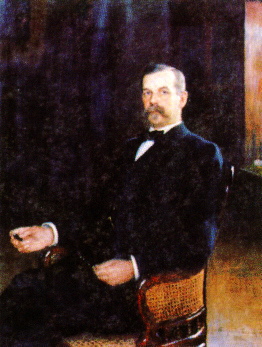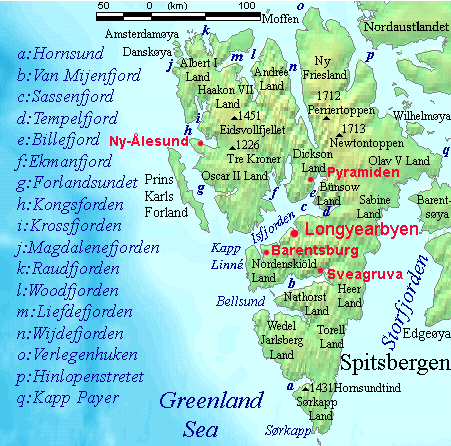|
Backlundtoppen
Backlundtoppen is a mountain in Olav V Land at Spitsbergen, Svalbard. It has a height of 1,068 m.a.s.l. and is located east of Billefjorden and west of Akademikarbreen. The mountain is named after Swedish-Russian astronomer Johan Oskar Backlund Johan Oskar Backlund (28 April 1846 – 29 August 1916) was a Swedish-Russian astronomer. His name is sometimes given as Jöns Oskar Backlund, however even contemporary Swedish sources give "Johan". In Russia, where he spent his entire career, he .... It hosted a trigonometric station during the Swedish-Russian Arc-of-Meridian Expedition. References History of Earth science Mountains of Spitsbergen {{Spitsbergen-mountain-stub ... [...More Info...] [...Related Items...] OR: [Wikipedia] [Google] [Baidu] |
Johan Oskar Backlund
Johan Oskar Backlund (28 April 1846 – 29 August 1916) was a Swedish-Russian astronomer. His name is sometimes given as Jöns Oskar Backlund, however even contemporary Swedish sources give "Johan". In Russia, where he spent his entire career, he is known as Oskar Andreevich Baklund (Оскар Андреевич Баклунд). Russian sources sometimes give his dates of birth and death as 16 April 1846 and 16 August 1916, since Russia still used the Julian calendar at the time. Life He was born in Länghem, in Västergötland, Sweden and graduated from Uppsala University in 1872. After getting his doctorate in 1875, he emigrated to Russia in 1876. He worked at Dorpat Observatory, in today's Tartu, Estonia, and then in 1879 worked at Pulkovo Observatory, becoming director of the observatory from 1895 until his death. He specialized in celestial mechanics, and notably worked on calculating the orbit of Comet Encke, taking into account the perturbations of various planets. ... [...More Info...] [...Related Items...] OR: [Wikipedia] [Google] [Baidu] |
Akademikarbreen
Akademikarbreen (until 1995 spelled Akademikerbreen) is a glacier in Olav V Land at Spitsbergen, Svalbard. It covers an area of about 500 square kilometers and is located east of Backlundtoppen and Svanbergfjellet. The glacier extends from Billefjorden to the eastern coast, and borders to Lomonosovfonna, Negribreen and Kvitbreen. It is named after two members of Russian Academy of Science The Russian Academy of Sciences (RAS; russian: Росси́йская акаде́мия нау́к (РАН) ''Rossíyskaya akadémiya naúk'') consists of the national academy of Russia; a network of scientific research institutes from across t .... References Glaciers of Spitsbergen {{Spitsbergen-glacier-stub ... [...More Info...] [...Related Items...] OR: [Wikipedia] [Google] [Baidu] |
Olav V Land
Olav V Land is a peninsula in eastern Spitsbergen Island, Svalbard named after Olav V of Norway. It is covered by the Olav V Icefield, measuring about .''Glacier Atlas of Svalbard and Jan Mayen''. 1993. Oslo: Norsk polarinstitutt, p. 32. The only larger ice cap in the Svalbard Archipelago is Austfonna Austfonna is an ice cap located on Nordaustlandet in the Svalbard archipelago in Norway. Covering an area of 7,800 km2, it is Europe's third-largest glacier by area and volume, after the Severny Island ice cap of Novaya Zemlya, Russia, and Va ... in Nordaustlandet, with an area of . References * http://www.ssb.no/aarbok/kart/i.html Peninsulas of Spitsbergen {{Spitsbergen-geo-stub ... [...More Info...] [...Related Items...] OR: [Wikipedia] [Google] [Baidu] |
Spitsbergen
Spitsbergen (; formerly known as West Spitsbergen; Norwegian: ''Vest Spitsbergen'' or ''Vestspitsbergen'' , also sometimes spelled Spitzbergen) is the largest and the only permanently populated island of the Svalbard archipelago in northern Norway. Constituting the westernmost bulk of the archipelago, it borders the Arctic Ocean, the Norwegian Sea, and the Greenland Sea. Spitsbergen covers an area of , making it the largest island in Norway and the 36th-largest in the world. The administrative centre is Longyearbyen. Other settlements, in addition to research outposts, are the Russian mining community of Barentsburg, the research community of Ny-Ålesund, and the mining outpost of Sveagruva. Spitsbergen was covered in of ice in 1999, which was approximately 58.5% of the island's total area. The island was first used as a whaling base in the 17th and 18th centuries, after which it was abandoned. Coal mining started at the end of the 19th century, and several permanent com ... [...More Info...] [...Related Items...] OR: [Wikipedia] [Google] [Baidu] |
Svalbard
Svalbard ( , ), also known as Spitsbergen, or Spitzbergen, is a Norway, Norwegian archipelago in the Arctic Ocean. North of continental Europe, mainland Europe, it is about midway between the northern coast of Norway and the North Pole. The islands of the group range from 74th parallel north, 74° to 81st parallel north, 81° north latitude, and from 10th meridian east, 10° to 35th meridian east, 35° east longitude. The largest island is Spitsbergen, followed by Nordaustlandet and . The largest settlement is Longyearbyen. The islands were first used as a base by the Whaling, whalers who sailed far north in the 17th and 18th centuries, after which they were abandoned. Coal mining started at the beginning of the 20th century, and several permanent communities were established. The Svalbard Treaty of 1920 recognizes Norwegian sovereignty, and the 1925 Svalbard Act made Svalbard a full part of the Kingdom of Norway. They also established Svalbard as a free economic zone and a ... [...More Info...] [...Related Items...] OR: [Wikipedia] [Google] [Baidu] |
Billefjorden
Billefjorden is the central fjord of the three branching from the innermost part of the Isfjorden to the northeast, in Svalbard, Norway. It is 30 km long and 5–8 km wide. Billefjorden lies between Dickson Land to the northwest and Bünsow Land in the southeast. Located on its northwestern shore is the former Russian coal mining community of Pyramiden (abandoned in 1998). To the northeast is Nordenskiöldbreen (Nordenskiöld Glacier). At its northeastern extreme is Adolf Bay. The fjord is named after the Dutch whaler Cornelius Claeszoon Bille, who is mentioned as being active in 1675 by the Dutch whaler Cornelius Gisbert Zorgdrager. Originally another bay (now known as Adventfjorden Adventfjorden (Advent Bay) is a 7 km long and 4 km wide bay running south-eastwards from the southern side of Isfjorden, on the west coast of Spitsbergen in Svalbard. The name represents a corruption of ''Adventure Bay'' - probably name ...) had been labeled as ''Klass Billen ... [...More Info...] [...Related Items...] OR: [Wikipedia] [Google] [Baidu] |
Norwegian Polar Institute
The Norwegian Polar Institute (NPI; no, Norsk Polarinstitutt) is Norway's central governmental institution for scientific research, mapping and environmental monitoring in the Arctic and the Antarctic. The NPI is a directorate under Norway's Ministry of Climate and Environment. The institute advises Norwegian authorities on matters concerning polar environmental management and is the official environmental management body for Norwegian activities in Antarctica. Activities The institute's activities are focused on environmental research and management in the polar regions. The NPI's researchers investigate biodiversity, climate and environmental toxins in the Arctic and Antarctic, and in this context the institute equips and organizes large-scale expeditions to both polar regions. The institute contributes to national and international climate work, and is an active contact point for the international scientific community. The institute collects and analyses data on the environ ... [...More Info...] [...Related Items...] OR: [Wikipedia] [Google] [Baidu] |
History Of Earth Science
History (derived ) is the systematic study and the documentation of the human activity. The time period of event before the invention of writing systems is considered prehistory. "History" is an umbrella term comprising past events as well as the memory, discovery, collection, organization, presentation, and interpretation of these events. Historians seek knowledge of the past using historical sources such as written documents, oral accounts, art and material artifacts, and ecological markers. History is not complete and still has debatable mysteries. History is also an academic discipline which uses narrative to describe, examine, question, and analyze past events, and investigate their patterns of cause and effect. Historians often debate which narrative best explains an event, as well as the significance of different causes and effects. Historians also debate the nature of history as an end in itself, as well as its usefulness to give perspective on the problems o ... [...More Info...] [...Related Items...] OR: [Wikipedia] [Google] [Baidu] |





.jpg)